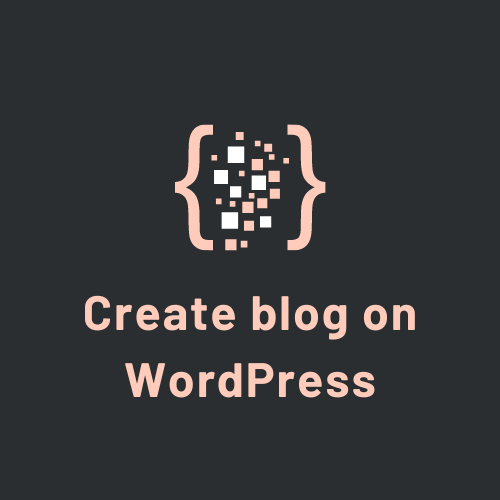Creating a blog on WordPress is a straightforward process that can be broken down into several steps. Here’s a guide to help you get started, from setting up your WordPress site to publishing your first blog post.
Step-by-Step Guide to Creating a Blog on WordPress
Step 1: Choose a Domain and Hosting
- Select a Domain Name:
- Choose a unique and memorable domain name for your blog. It should reflect your blog’s niche or your personal brand.
- Sign Up for Web Hosting:
- Choose a reliable web hosting provider. Popular options include Bluehost, SiteGround, and HostGator. Many hosting providers offer packages specifically designed for WordPress.
- During the signup process, you can often purchase your domain name as well.
Step 2: Install WordPress
- Log In to Your Hosting Account:
- After purchasing hosting, log in to your hosting account dashboard.
- Find the WordPress Installation Section:
- Look for a section like “Website” or “Website Management” and find the option to install WordPress. Most hosts offer a one-click WordPress installation.
- Complete the Installation:
- Follow the prompts to install WordPress. You will need to set your site title, username, and password. Keep these details safe.
Step 3: Set Up Your WordPress Site
- Log In to WordPress:
- Go to
yourdomain.com/wp-adminto log in to your WordPress dashboard using the credentials you set during installation.
- Go to
- Choose a Theme:
- Go to “Appearance” > “Themes” and click “Add New” to browse and install a theme that fits your blog’s style.
- Popular free themes include Astra, OceanWP, and Neve. For premium themes, consider options like Divi or Elementor.
- Customize Your Theme:
- After activating your theme, go to “Appearance” > “Customize” to modify the design, including colors, fonts, and layout.
Step 4: Install Essential Plugins
- Navigate to Plugins:
- Go to “Plugins” > “Add New”.
- Install Key Plugins:
- Yoast SEO: For optimizing your blog for search engines.
- Akismet Anti-Spam: To protect your blog from spam comments.
- Jetpack: For enhanced security, performance, and site management.
- WPForms: To add contact forms to your blog.
- Elementor: For advanced page building and design.
- Activate and Configure Plugins:
- After installing plugins, activate and configure them according to your needs.
Step 5: Create Essential Pages
- Create Pages:
- Go to “Pages” > “Add New” to create essential pages like Home, About, Contact, and Blog.
- Add Content:
- Fill these pages with relevant content and publish them.
Step 6: Write and Publish Your First Blog Post
- Add a New Post:
- Go to “Posts” > “Add New”.
- Create Your Content:
- Enter a title and write your blog post in the editor. Use headings, images, and links to enrich your content.
- Optimize for SEO:
- Use the Yoast SEO plugin to optimize your post’s title, meta description, and keywords.
- Add Categories and Tags:
- Assign relevant categories and tags to organize your post.
- Publish Your Post:
- Once you’re satisfied with your content, click “Publish” to make it live on your blog.
Step 7: Promote Your Blog
- Share on Social Media:
- Share your blog posts on social media platforms like Facebook, Twitter, Instagram, and LinkedIn to reach a wider audience.
- Engage with Your Readers:
- Respond to comments and engage with your readers to build a community.
- Utilize Email Marketing:
- Use tools like Mailchimp or ConvertKit to build an email list and send newsletters to your subscribers.
Tips for Success
- Consistency is Key: Publish new content regularly to keep your audience engaged.
- Quality Over Quantity: Focus on providing valuable and well-researched content.
- Engage with Other Bloggers: Network with other bloggers in your niche to gain exposure and build relationships.
Conclusion
Creating a blog on WordPress involves choosing a domain and hosting, setting up WordPress, customizing your site, installing essential plugins, creating important pages, and publishing content. With dedication and consistency, your WordPress blog can become a successful platform for sharing your ideas and connecting with your audience. Happy blogging!


Leave a Reply